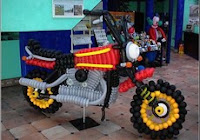In objectified, the film tells us that simple objects we use everyday are created for both form and function. There is always a purpose for exhibiting the form it shows. Many designers don’t just create something because it looks good. They consider the content and form so that they’ll achieve their desired purpose in creating something which is useful, comfortable, and/or beautiful. And in combining form and content together, we get what is called a concept.
Form includes the materials used and the principles of design, while content is the subject matter, as it tells what designer wants to communicate. In form, designers focus on the balance, proportion, or texture of the object. For example, a peeler exhibits its many form not just for the purpose of visual view, but also to allow people to get a more comfortable grip when they are using the tool. To get the comfortable grip, designers use things such as rubber to cover around the sharp edges so that users would not hurt their hands. Designers then have to decide the shape and size of the peeler in considering which type or size would best suit their consumers. By combining the form and content together, designers create an object that has achieved its purpose.
What do designers consider when they are making something? Industrial designers want us to enjoy using their peelers, or any other object, that they designed through hard effort, and get a comfortable grip that makes using it more efficient. In combining form and content together, designers create this concept based off the idea that they want to make something which is useful and comfortable to the consumer. This idea is seen in many designs of society as almost everything seems to have a purpose in its existence.













